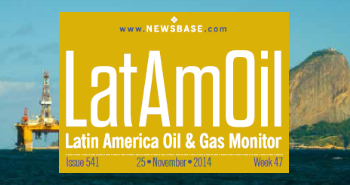ESA report says satellite imagery reveals evidence of methane leak at Pemex platform
The European Space Agency (ESA) has published research showing that Mexico’s national oil company (NOC) Pemex experienced a methane leak at an offshore platform last December.
According to the report, the platform – located at Zaap, one of the oilfields within the Ku-Maloob-Zaap cluster in the southern Gulf of Mexico off the coast of Campeche State – released large quantities of methane gas into the atmosphere. The total volume of gas released during this “ultra-emission” event amounted to more than 4,000 tonnes, equivalent to 3% of the country’s annual carbon dioxide emissions, ESA researchers concluded.
The ESA team said in the report that two satellites recorded images of methane plumes streaming from the site between December 8 and December 27. Meanwhile, it noted, other satellites detected that the platform’s usual methane flaring came to a halt on December 8 and resumed only sporadically during that 17-day period.
The report was drawn up by a team of researchers led by Itziar Irakulis Loitxate from the Polytechnic University of Valencia. It concludes that the leak stemmed from “abnormal process conditions at the site,” and Reuters explained that this phrase could refer to both system and equipment malfunctions.
Irakulis Loitxate told the news agency that satellite imagery had played a crucial role in turning up evidence of the leak. “These are the first detections made from satellites. Without the monitoring approach described in the paper, similar events would remain invisible and unaccounted,” he said.
ESA researchers agreed, saying that the incident served as proof of scientists’ growing ability to detect and quantify emissions of this nature from space.
Methane is typically flared off during oil production operations to minimise harmful impact. It is considered a key driver of climate change, as it is much more powerful than at trapping heat than carbon dioxide. However, it only lasts in the atmosphere for about a decade.


Follow us online